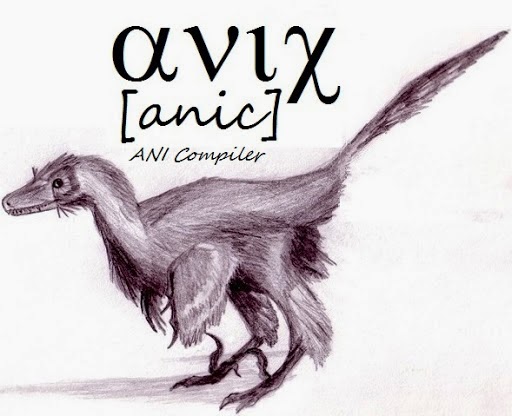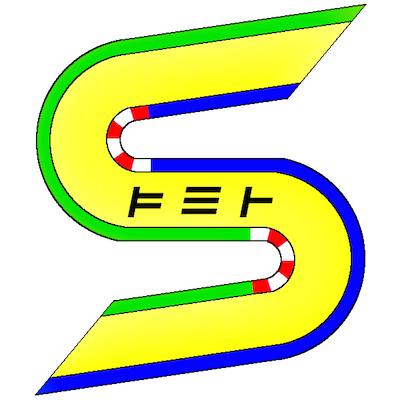Update #1: this post hit the front page of r/programming and HN. Thank you for the great feedback! I’ve added some corrections below.
Update #2: this blog post has been translated into Japanese!
Every now and then, I stumble across a programming language that does something so different that it changes how I think about coding. In this post, I want to share some of my favorite finds.
This is not your grandma’s “functional programming will change the world!” blog post: this list is much more esoteric. I’d wager most readers haven’t heard of the majority of the languages and paradigms below, so I hope you have as much fun learning about these new concepts as I did.
Note: I have only minimal experience with most of the languages below: I find the ideas behind them fascinating, but claim no expertise in them, so please point out any corrections and errors. Also, if you’ve found any new paradigms and ideas not covered here, please share them!
Concurrent by default

Let’s kick things off with a real mind bender: there are programming languages out there that are concurrent by default. That is, every line of code is executed in parallel!
For example, imagine you wrote three lines of code, A, B, and C:
A;
B;
C;In most programming languages, A would execute first, then B, and then C. In a language like ANI, A, B, and C would all execute at the same time!
Control flow or ordering between lines of code in ANI is merely a side effect of explicit dependencies between lines of code. For example, if B had a reference to a variable defined in A, then A and C would execute at the same time, and B would execute only after A finished.
Let’s look at an example in ANI. As described in the tutorial, ANI programs consists of “pipes” and “latches” that are used to manipulate streams and data flows. The unusual syntax is tough to parse, and the language seems dead, but the concepts are pretty interesting.
Here’s a “Hello World” example in ANI:
"Hello, World!" ->std.outIn ANI terminology, we are sending the "Hello, World!" object (a string)
to the std.out stream. What happens if we send another string to
std.out?
"Hello, World!" ->std.out
"Goodbye, World!" ->std.outBoth of these lines of code execute in parallel, so they could end up in any order in the console. Now, look what happens when we introduce a variable on one line and reference it later:
s = [string\];
"Hello, World!" ->s;
\s ->std.out;The first line declares a “latch” (latches are a bit like variables) called
s that contains a string; the second line sends the text
"Hello, World!" to s; the third line “unlatches”
s and sends the contents to std.out. Here, you can
see ANI’s implicit program sequencing: since each line depends on the previous
one, this code will execute in the order it is written.
The Plaid language also claims to support concurrency by default, but uses a permissions model, as described in this paper, to setup control flow. Plaid also explores other interesting concepts, such as Typestate-Oriented Programming, where state changes become a first class citizen of the language: you define objects not as classes, but as a series of states and transitions that can be checked by the compiler. This seems like an interesting take on exposing time as a first class language construct as discussed in Rich Hickey’s Are we there yet talk.
Multicore is on the rise and concurrency is still harder than it should be in most languages. ANI and Plaid offer a fresh take on this problem that could lead to amazing performance gains; the question is whether “parallel by default” makes concurrency easier or harder to manage.
Update: the description above captures the basic essence of ANI and Plaid, but I used the terms “concurrent” and “parallel” interchangeably, even though they have different meanings. See Concurrency Is Not Parallelism for more info.
Dependent types

Example languages: Idris, Agda, Coq
You’re probably used to type systems in languages like C and Java, where the compiler can check that a variable is an integer, list, or string. But what if your compiler could check that a variable is “a positive integer”, “a list of length 2”, or “a string that is a palindrome”?
This is the idea behind languages that support dependent types: you can specify types that can check the value of your variables at compile time. The shapeless library for Scala adds partial, experimental support (read: probably not ready for primetime) for dependent types to Scala and offers an easy way to see some examples.
Here is how you can declare a Vector that contains the values 1,
2, 3 with the shapeless library:
val l1 = 1 :#: 2 :#: 3 :#: VNilThis creates a variable l1 who’s type signature specifies not only
that it’s a Vector that contains Ints, but also that
it is a Vector of length 3. The compiler can use this information
to catch errors. Let’s use the vAdd method in Vector to perform a pairwise
addition between two Vectors:
val l1 = 1 :#: 2 :#: 3 :#: VNil
val l2 = 1 :#: 2 :#: 3 :#: VNil
val l3 = l1 vAdd l2
// Result: l3 = 2 :#: 4 :#: 6 :#: VNilThe example above works fine because the type system knows both
Vectors have length 3. However, if we tried to vAdd
two Vectors of different lengths, we’d get an error at compile
time instead of having to wait until run time!
val l1 = 1 :#: 2 :#: 3 :#: VNil
val l2 = 1 :#: 2 :#: VNil
val l3 = l1 vAdd l2
// Result: a *compile* error because you can't pairwise add vectors
// of different lengths!Shapeless is an amazing library, but from what I’ve seen, it’s still a bit rough, only supports a subset of dependent typing, and leads to fairly verbose code and type signatures. Idris, on the other hand, makes types a first class member of the programming language, so the dependent type system seems much more powerful and clean. For a comparison, check out the Scala vs Idris: Dependent Types, Now and in the Future talk.
Formal verification methods have been around for a long type, but were often too cumbersome to be usable for general purpose programming. Dependent types in languages like Idris, and perhaps even Scala in the future, may offer lighter-weight and more practical alternatives that still dramatically increase the power of the type system in catching errors. Of course, no dependent type system can catch all errors due to to ineherent limitations from the halting problem, but if done well, dependent types may be the next big leap for static type systems.
Concatenative languages

Example languages: Forth, cat, joy
Ever wonder what it would be like to program without variables and function application? No? Me neither. But apparently some folks did, and they came up with concatenative programming. The idea is that everything in the language is a function that pushes data onto a stack or pops data off the stack; programs are built up almost exclusively through functional composition (concatenation is composition).
This sounds pretty abstract, so let’s look at a simple example in cat:
2 3 +Here, we push two numbers onto the stack and then call the + function,
which pops both numbers off the stack and pushes the result of adding them
back onto the stack: the output of the code is 5. Here’s a slightly more
interesting example:
def foo {
10 <
[ 0 ]
[ 42 ]
if
}
20
fooLet’s walk through this line by line:
- First, we declare a function
foo. Note that functions in cat specify no input parameters: all parameters are implicitly read from the stack. foocalls the<function, which pops the first item on the stack, compares it to 10, and pushes eitherTrueorFalseback onto the stack.- Next, we push the values 0 and 42 onto the stack: we wrap them in brackets
to ensure they get pushed onto the stack unevaluated. This is because they
will be used as the “then” and “else” branches (respectively) for the call to
the
iffunction on the next line. - The
iffunction pops 3 items off the stack: the boolean condition, the “then” branch, and the “else” branch. Depending on the value of the boolean condition, it’ll push the result of either the “then” or “else” branch back onto the stack. - Finally, we push 20 onto the stack and call the
foofunction. - When all is said and done, we’ll end up with the number 42.
For a much more detailed introduction, check out The Joy of Concatenative Languages.
This style of programming has some interesting properties: programs can be split and concatenated in countless ways to create new programs; remarkably minimal syntax (even more minimal than LISP) that leads to very concise programs; strong meta programming support. I found concatenative programming to be an eye opening thought experiment, but I’m not sold on its practicality. It seems like you have to remember or imagine the current state of the stack instead of being able to read it from the variable names in the code, which can make it hard to reason about the code.
Declarative programming

Example languages: Prolog, SQL
Declarative programming has been around for many years, but most programmers are still unaware of it as a concept. Here’s the gist: in most mainstream languages, you describe how to solve a particular problem; in declarative languages, you merely describe the result you want, and the language itself figures out how to get there.
For example, if you’re writing a sorting algorithm from scratch in C, you
might write the instructions for merge sort, which describes, step by step,
how to recursively split the data set in half and merge it back together in
sorted order: here’s an
example. If you were
sorting numbers in a declarative language like
Prolog, you’d instead describe the
output you want: “I want the same list of values, but each item at index
i should be less than or equal to the item at index i + 1”. Compare the
previous C solution to this Prolog code:
sort_list(Input, Output) :-
permutation(Input, Output),
check_order(Output).
check_order([]).
check_order([Head]).
check_order([First, Second | Tail]) :-
First =< Second,
check_order([Second | Tail]).If you’ve used SQL, you’ve done a form of declarative programming and may not have
realized it: when you issue a query like select X from Y where Z,
you are describing the data set you’d like to get back; it’s the database
engine that actually figures out how to execute the query. You can use the
explain command in most databases to see the execution plan and figure out
what happened under the hood.
The beauty of declarative languages is that they allow you to work at a much higher level of abstraction: your job is just to describe the specification for the output you want. For example, the code for a simple sudoku solver in prolog just lists out what each row, column, and diagonal of a solved sudoku puzzle should look like:
sudoku(Puzzle, Solution) :-
Solution = Puzzle,
Puzzle = [S11, S12, S13, S14,
S21, S22, S23, S24,
S31, S32, S33, S34,
S41, S42, S43, S44],
fd_domain(Solution, 1, 4),
Row1 = [S11, S12, S13, S14],
Row2 = [S21, S22, S23, S24],
Row3 = [S31, S32, S33, S34],
Row4 = [S41, S42, S43, S44],
Col1 = [S11, S21, S31, S41],
Col2 = [S12, S22, S32, S42],
Col3 = [S13, S23, S33, S43],
Col4 = [S14, S24, S34, S44],
Square1 = [S11, S12, S21, S22],
Square2 = [S13, S14, S23, S24],
Square3 = [S31, S32, S41, S42],
Square4 = [S33, S34, S43, S44],
valid([Row1, Row2, Row3, Row4,
Col1, Col2, Col3, Col4,
Square1, Square2, Square3, Square4]).
valid([]).
valid([Head | Tail]) :- fd_all_different(Head), valid(Tail).Here is how you would run the sudoku solver above:
| ?- sudoku([_, _, 2, 3,
_, _, _, _,
_, _, _, _,
3, 4, _, _],
Solution).
S = [4,1,2,3,2,3,4,1,1,2,3,4,3,4,1,2]The downside, unfortunately, is that declarative programming languages can easily
hit performance bottlenecks. The naive sorting algorithm above is likely
O(n!); the sudoku solver above does a brute force search; and
most developers have had to provide database hints and extra indices to avoid
expensive and inefficient plans when executing SQL queries.
Symbolic programming

Example languages: Aurora
The Aurora language is an example of symbolic programming: the “code” you write in these languages can include not only plain text, but also images, math equations, graphs, charts, and more. This allows you to manipulate and describe a large variety of data in the format native to that data, instead of describing it all in text. Aurora is also completely interactive, showing you the results from each line of code instantly, like a REPL on steroids.
The Aurora language was created by Chris Granger, who also built the Light Table IDE. Chris outlines the motivation for Aurora in his post Toward a better programming: some of the goals are to make programming more observable, direct, and reduce incidental complexity. For more info, be sure to see Bret Victor’s incredible talks: Inventing on Principle, Media for Thinking the Unthinkable, and Learnable Programming.
Update: “symbolic programming” is probably not the right term to use for Aurora. See the Symbolic programming wiki for more info.
Knowledge-based programming

Examples: Wolfram Language
Much like the Aurora language mentioned above, The Wolfram Language is also based on symbolic programming. However, the symbolic layer is merely a way to provide a consistent interface to the core of the Wolfram Language, which is knowledge-based programming: built into the language is a vast array of libraries, algorithms, and data. This makes it easy to do everything from graphing your Facebook connections, to manipulating images, to looking up the weather, processing natural language queries, plotting directions on a map, solving mathematical equations, and much more.
I suspect the Wolfram Languages has the largest “standard library” and data set of any language in existence. I’m also excited by the idea that Internet connectivity is an inherent part of writing the code: it’s almost like an IDE where the auto-complete function does a google search. It’ll be very interesting to see if the symbolic programming model is as flexible as Wolfram claims and can truly take advantage of all of this data.
Update: although Wolfram claims the Wolfram Language supports “symbolic programming” and “knowledge programming”, these terms have slightly different definitions. See the Knowledge level and Symbolic Programming wikis for more info.
Herman van der Veer
If you enjoyed this post, you may also like my books, Hello, Startup and Terraform: Up & Running. If you need help with DevOps or infrastructure, reach out to me at Gruntwork.
